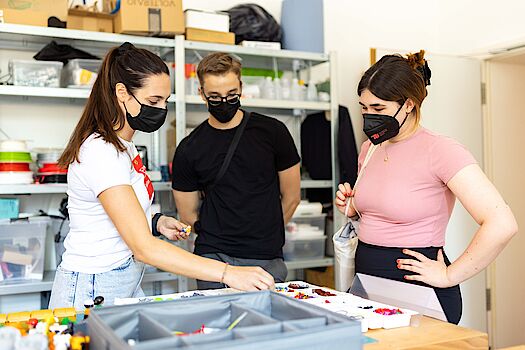How can water consumption be reduced with digital solutions? How can heart disease be better detected using digital technologies? These and other questions were explored by around 400 visitors to the Einstein Center Digital Future (ECDF) on July 2. During the Long Night of the Sciences (LNdW), universities, colleges and research institutions throughout Berlin opened their doors to show visitors their research - including the ECDF. From late afternoon until midnight, guests were able to learn about twelve projects in the field of digitization research and try them out for themselves.
In the House of Digitization, ECDF professor Leonid Goubergrits showed how models developed by engineers help medical professionals detect and treat heart disease. ECDF Professor Andrea Cominola and his team used a computer game to demonstrate how even small-scale measures such as rain gardens and green roofs can be important in preventing urban flooding. "It was great to see the ECDF come back to life and open to visitors* after the last few years of COVID restrictions. In our Smart Water Networks group, we did a lot of exciting research on topics like water use and sustainability, and even created a digital game about green infrastructure and flooding in cities. We were very happy to present our results to the broader community in Berlin and the reactions were great!" reports Andrea Cominola, Professor of Smart Water Networks at ECDF and TU Berlin.
One of the highlights to the LNDW at the House of Digitalization was the Escape Room on Quantum Technologies by Prof. Dr. Janik Wolters. The "live escape game" challenges players to collaboratively solve exciting puzzles. "The LNDW was a great opportunity for me and my team to bring the future possibilities of quantum technologies closer to the Berlin audience in a playful way already now," reports Wolters.
The Long Night of Science (LNDW) has been held annually since 2001 (with the exception of 2020 and 2021). This year, more than 1,400 program items awaited visitors* between 5 p.m. and midnight, including experiments, lectures, science shows and guided tours.

